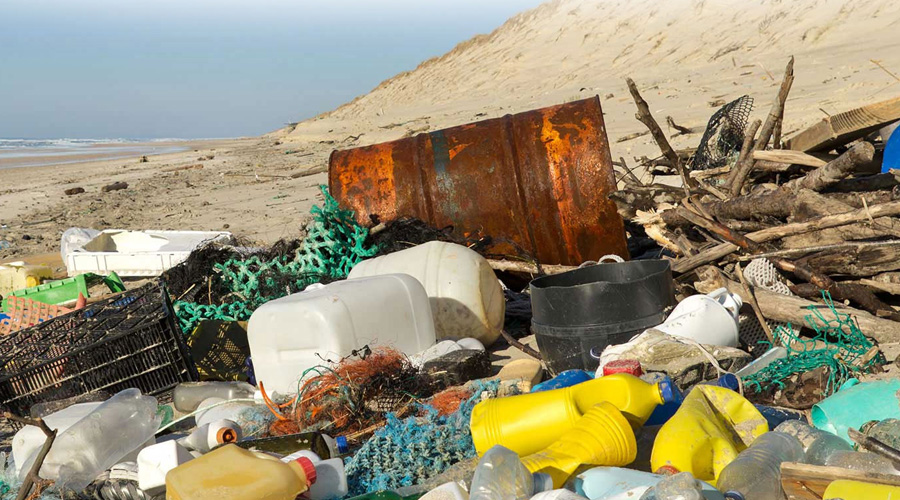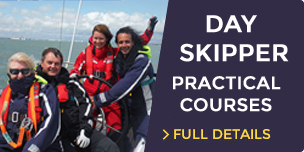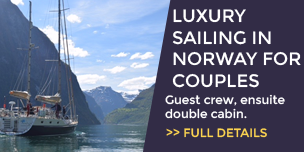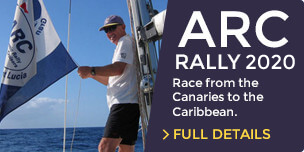Plastic Pollution in the Sea: The Problem and Solution
6,472 views | October 5th, 2017
You don’t need to be sailors to know it’s becoming increasingly obvious that we need to be more vocal about how the ocean is treated by humanity. Far too many of us have seen the rise of plastic waste on the seas, shores and harbours. To help us better understand the situation and possible solutions we’ve invited Ryan Carter from CrowdLeaf.org.uk to update us on the current state of play.
Ryan founded Crowdleaf in mid-2016 as a UK based sustainability forum, it has since expanded to have readers from around the world and writers from across Europe and America, it has also been a primary sponsor of the UK Crowdfunding Conference in 2016. CrowdLeaf is funded by donations and through selling of environmentally and socially friendly products and services and is in the process of becoming a community interest company. The website focuses on, produces and shares events, news, views and opinions that cover conservation, climate change, sustainability and green issues as a whole.
The Big Problem is Tiny: Tiny Plastic:
Pretty much everywhere you look today, in your house, job or classrooms there is plastic. So it should come as no surprise that it is now all over our natural environment. It is in the seas and oceans, creeping into our food chains having been digested by animals and is also in our tap water.
A recent study found that in 4/5 of tap water samples from across 5 continents including Europe, plastic is being digested in drinking water daily. (https://orbmedia.org/stories/Invisibles_plastics) Even the grandest of buildings are not exempt from this problem, Trump Tower and US government agencies are also testing positive for plastics, it truly does affect us all.
So collectively, we have a problem and it is getting worse, not better.
Plastic in the form of nurdles, for example, are causing a serious problem for marine life and can be found all over the beach. In a piece I wrote recently about plastic pollution we spoke about litter picking as a form of environmental activism.
Litter picking is pivotal in clearing up our natural environment as plastic will, if not removed, effectively last forever.
Then there are many people who believe they are being as good to the environment as they can be, yet do not realise they pollute the seas with plastic or other products because plastic fibres from polyester and acrylic clothing are polluting on an unimaginable scale.
One 6kg wash produces 140,000 fibres from polyester-cotton blend half a million polyester fibres and nearly 3/4 of a million acrylic fibers. That is a lot of pollution being produced by every household’s average wash. (BBC News: Dirty laundry: Are your clothes polluting the ocean? ).
The problem and the beauty of the seas and oceans are that they are fluid and what’s not on the seabed travels, often very great distances. Sadly the uninhabited Arctic is no exception to this underlying rule of the waves.
With 1/3 of the Arctic sampled now showing plastic pollution, further hampering wildlife already facing an unprecedented level and speed of climate change. Plastics of all kinds, from fibers and tiny particles being found in ice cores to a giant patch of plastic resembling a soup like thickness, forming an island of plastic between 100 tonnes and 1200 tonnes of everlasting waste. (The Verge: A big patch of plastic garbage has been discovered in the Arctic)
The Solution to Plastic Pollution:
There are alternatives that companies can and should be looking at such as natural products, lyocell made from trees, leather made from pineapple and just not using plastic when we could use something else, for example, carrier bags vs cotton bags. There are also alternative ways of doing things that will both minimise the need for plastics and better utilise the plastics so that it does not end up being thrown.
Throughout this article, we have focused on the negatives that plastics have on wildlife. This is not the whole story however as it would seem not all creatures are created equal in terms of damage caused by plastics.
Wax worms, which commonly eat bees wax can use those same chemicals to processes and eat plastics. This obviously will not be able to solve the problem while it is at this scale but as a way of removing the levels of plastics going to landfill it may at least solve part of the problem ( National Geographic: This Bug Can Eat Plastic. But Can It Clean Up Our Mess? ) .
There are also companies and inventions which are trying to reverse the plastic problem we face, once such invention is the repurposing of the boom.
The idea is a simple one, whereby the boom will be shaped like a U and will surround areas known for plastic accumulation and will be around 1-2 km long. Strong enough to hold the plastics and flexible enough to move with the waves. ( Cleaning up the Great Pacific Garbage Patch )
Solutions and actions are also being taken within industry. A recent example is micro-beads of plastic that are added to soaps, body wash and cosmetic products.
These are also washing down our drains into the seas so the government has banned the use of these plastic beads in these types of product. Though it does not come into force until next year and is limited in scope.
Lastly, we could also look to strengthen our protection of wildlife, both with funding, community projects and through strengthening our animal welfare laws. Afterall what we are doing to the wildlife, to our planet and frankly to ourselves wouldn’t be accepted if it was done to pets.
So while we as consumers place demand on for alternatives on the market and on our representatives, we should also keep an eye on the horizon for new products and solutions to reverse the damage already done.
What Crowdleaf Offers:
Along with writing about sustainability and green issues Crowdleaf.org.uk , shares events and news in the area, making it a go-to site for people who want to stay in the know or get involved in the solutions.
As well as sharing all things green they also sell alternative products such as power packs that draw energy from the sun rather than the grid, peat made from coconut fibres. They give talks to all age groups and for all types of audiences and can bring learning and entertainment together through a self-made and published game.
They offer consulting and advice on how to green your business, your house or how to successfully scale a campaign. To find out more read what they at CrowdLeaf.
Posted by: First Class Sailing








